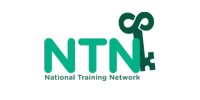Premise is that whatever goals schools choose we would ask that we start with one goal building wide and then have them (coach and admin team) choose the methodology starting point
What to look for?: SMP 4, 5, 7, 8 via ATLAS
Assess teacher knowledge and experiences with the SMPs
Number of Visits
Number of Teachers
Visit Day Schedule:
When do they teach math and when is common and individual planning?
Structure of Math Block:
Where was problem solving evident during the needs assessment? (i.e. teacher/student modeling with annotation, teacher using questioning to encourage discourse, etct.) Was there a missed opportunity?
Classroom Setup:
Is there a student reference for the cognitive pathway that they use (posters); Word walls up, student access to a reference point for mathematics language; seating arrangement feasible for students to get in groups and pairs easily
Assessment of the Problems Used for Problem Solving:
Are the problems being used standards aligned and culturally relevant, and if not how is that being addressed?
What could the data points be:
ATLAS Data, student work Samples on open ended questions, Summative assessments, formative assessments, teacher/coach created rubrics (from curricular resource), State Rubrics for problem solving (i.e. MD modeling and reasoning standards), NTN Created Peer Reflection Rubrics (from what Lisa created years ago for 2 and 3 point questions)
Ongoing Needs Assessment
- What they need to know ?
- What you need to do?
- What you need to do?
- What is data point?
Describe relationship of facts in a problem
Represent real world situation mathematically
Apply facts to find solution to a problem
Reevaluate and redesign plan as needed when solving
Coaching Practices
- MLR/Irs/HYS : Discussion Supports, 5 practices, Distributive Summarizing
- Operation Word Wall Creation and Concept Based Word Wall
- “Just In Time” Content Training (CPA)
- Creating access points for students/Scaffolding
- MTP 2:Implement tasks that promote reasoning and problem solving
- MTP 3: Use and connect mathematical representations
- MTP 4: Facilitate meaningful mathematical discourse
- MTP 5:Pose purposeful questions
- MTP 7:Support productive struggle in learning mathematics
- MTP 8:Elicit and use evidence of student thinking
Demonstrate ability to choose proper tool(s)
Use tool(s) appropriately (ex. ruler)
Identify limitations of tool(s)
Use tool to guide their discovery of the concept
Coaching Practices
- Standards unpacking for rigor components with emphasis on representations and concept development
- “Just In Time” Content Training (CPA)
- MTP 3: Use and connect mathematical representations
- MTP 8: Elicit and use evidence of student thinking
- Unpacking/planning for district provided lessons/unit
- Identifyig things as tools that are not traditionally tools
Recognize the significance of the patterns/structures/properties of numbers and/or problem constraints
Make connections between different representations to deepen/support understanding
Deconstruct problem into easier parts to solve
Revisit problem identified (Step S) to revise plan as needed (Step L)
Coaching Practices
- “Just In Time” Content Training (CPA)
- Standards unpacking
- IR Capturing Quantities, Number talks, Three Reads, 5 Practices
- MLR – Compare and Connect
- Problem Solving
- Intructional Shifts – with focus on coherence – Coherence Map
- MTP 2:Implement tasks that promote reasoning and problem solving.
- MTP 3: Use and connect mathematical representations.
- MTP 4: Facilitate meaningful mathematical discourse.
- MTP 5:Pose purposeful questions.
- MTP 7:Support productive struggle in learning mathematics.
- MTP 8:Elicit and use evidence of student thinking.
Reference prior knowledge in learning
Develop rule/formula based on similarities and patterns
Evaluate steps of problem solving strategy throughout process (for reasonableness)
Determine if the rule/formula works in every situation
Coaching Practices
- MTP 2:Implement tasks that promote reasoning and problem solving.
- MTP 3: Use and connect mathematical representations.
- MTP 4: Facilitate meaningful mathematical discourse.
- MTP 5:Pose purposeful questions.
- MTP 7:Support productive struggle in learning mathematics.
- MTP 8:Elicit and use evidence of student thinking.
- “Just In Time” Content Training (CPA)
- IR – 5 Practices
- MLR: Collect and Distplay
- Problem Solving
- Standards Unpacking
- Unpacking/planning for district provided lessons/unit
- Vertical Planning
- Coherence Map


